How Jackfruit Enhances Island Curries
37 min read Discover how jackfruit transforms Solomon Islands curries with meaty texture, coconut richness, and spice pairings—plus tips for choosing green vs. ripe fruit for savory depth. October 03, 2025 09:07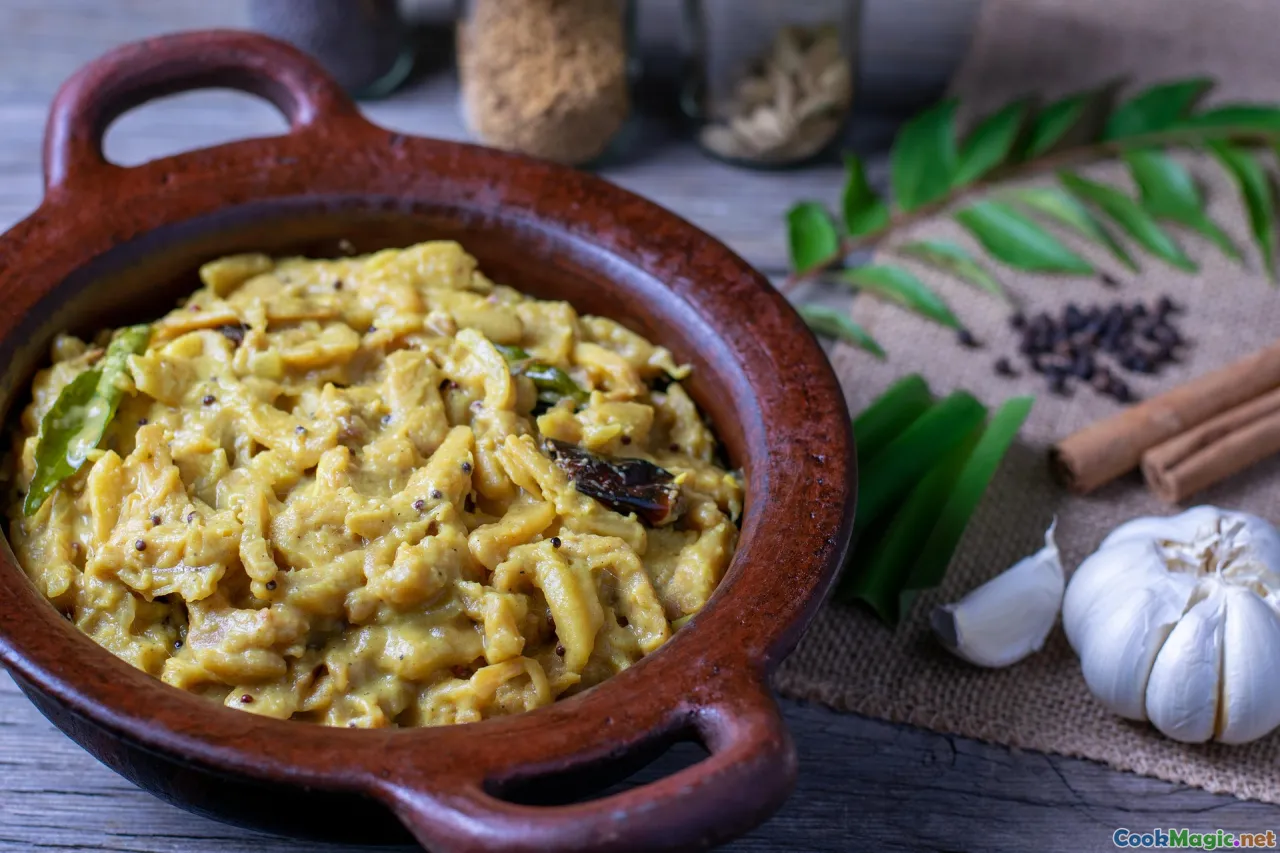
The first time I smelled jackfruit melting into a curry on Guadalcanal, the air tasted like rain-soaked leaves and warm coconut. It was late afternoon in Honiara, the kind of hour when traffic at Point Cruz slows to the tempo of the sea, and the market is thinning from its morning frenzy. A vendor near the western end of the Central Market had split open a green-skinned jackfruit the size of a small canoe. Pale bulbs glistened like amber moonstones; the sap ran in milky threads. A little later, in a kitchen not far from the Mataniko River, we simmered chunks of young jackfruit alongside ginger, garlic, turmeric stained gold, and a handful of bird’s eye chilies. Coconut cream slumped to the surface in ivory eddies. I had cooked curries across the Pacific, but here in the Solomon Islands, jackfruit did something quiet and extraordinary. It did not fight to be the center. Instead, it coaxed everything together: spice, smoke, sea, and the green taste of the island itself.
Curries travel easily. They gather new accents like a fisherman gathers stories, and in the Solomons, where gardens lean against the sea and coconut trees keep time, the addition of jackfruit feels inevitable. Jackfruit is a neighborly fruit—plentiful, generous, and adaptable. In the hands of home cooks from Auki to Gizo, it becomes a thread that ties together coconut richness and ocean brine; a bridge between peppery heat and the herb-swathed cool of backyard greens. For a region that lives by its orchards, reefs, and custom, jackfruit is more than a meat stand-in. It is a flavor conductor.
The place curry found in Solomon Islands kitchens
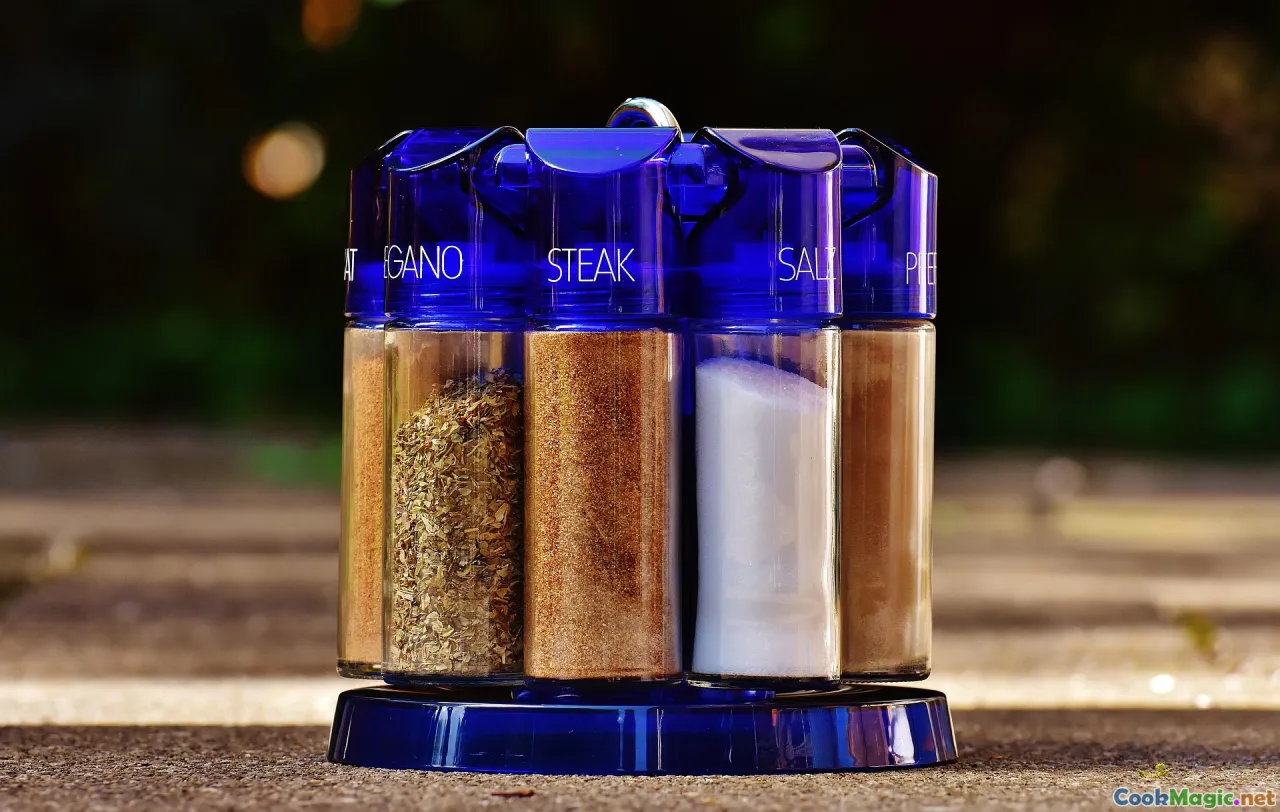
Curry in the Solomon Islands did not arrive with a single boat. It came in packets tucked into the corner shelves of Honiara’s Chinatown groceries; it rode the laughter of traveling cooks aboard tuna boats docking at Noro, Western Province; it found a home in the Sunday kitchens of families who stir coconut milk as naturally as others pour tea. The archipelago’s foodways have always been elastic, shaped by trade winds, missionaries, education abroad, and the steady drip of new ingredients into the market stalls.
If you wander the aisles at Central Market on a Saturday, you will find turmeric roots with knobby fingers, lemongrass bundled like green tassels, and the familiar red tins of curry powder stacked beside bags of cassava and taro. Spices come from Asian wholesalers and small shops near Mendana Avenue; many households rely on simple curry powders, bright with turmeric and coriander, while others blend their own pastes using ginger grown outside the back door and chilies that sprout where they please. More than a trend, curry has become a vocabulary for flavor, a way to talk about warmth and comfort in a landscape that is otherwise lush with boiled greens, grilled fish, and roasted root crops.
Jackfruit enters this conversation with the shy confidence of an elder. The trees are ubiquitous—shading roadside stalls, sheltering chickens, studding village paths. A single tree can feed a neighborhood; young, unripe fruit acts like a vegetable, quietly absorbing flavor and lending the long, friendly fibers that mimic meat. Ripe fruit is its own story—honey-sweet, perfumed, best eaten fresh or stirred into sweet curries and puddings. Seeds, too, become supper, boiled until tender and folded into sauces like chestnuts.
I think often of a Sunday after church in West Honiara, where Auntie Lina, whose front steps were always dusted with cassava flour, stirred a pot of jackfruit curry next to a skillet of pan-fried reef fish. We ate on plates balanced on our knees. Coconut cream licked the sides of the curry; a few curry leaves snapped between her fingers snapped their citrusy perfume into the pot. Everyone reached for the jackfruit first. It was not an act of cutting out meat; it was the simple fact that this curry made the rice taste somehow more like rice, made the greens taste greener. The fruit, young and mild, made space for everything else.
Understanding jackfruit’s stages: a cook’s field guide
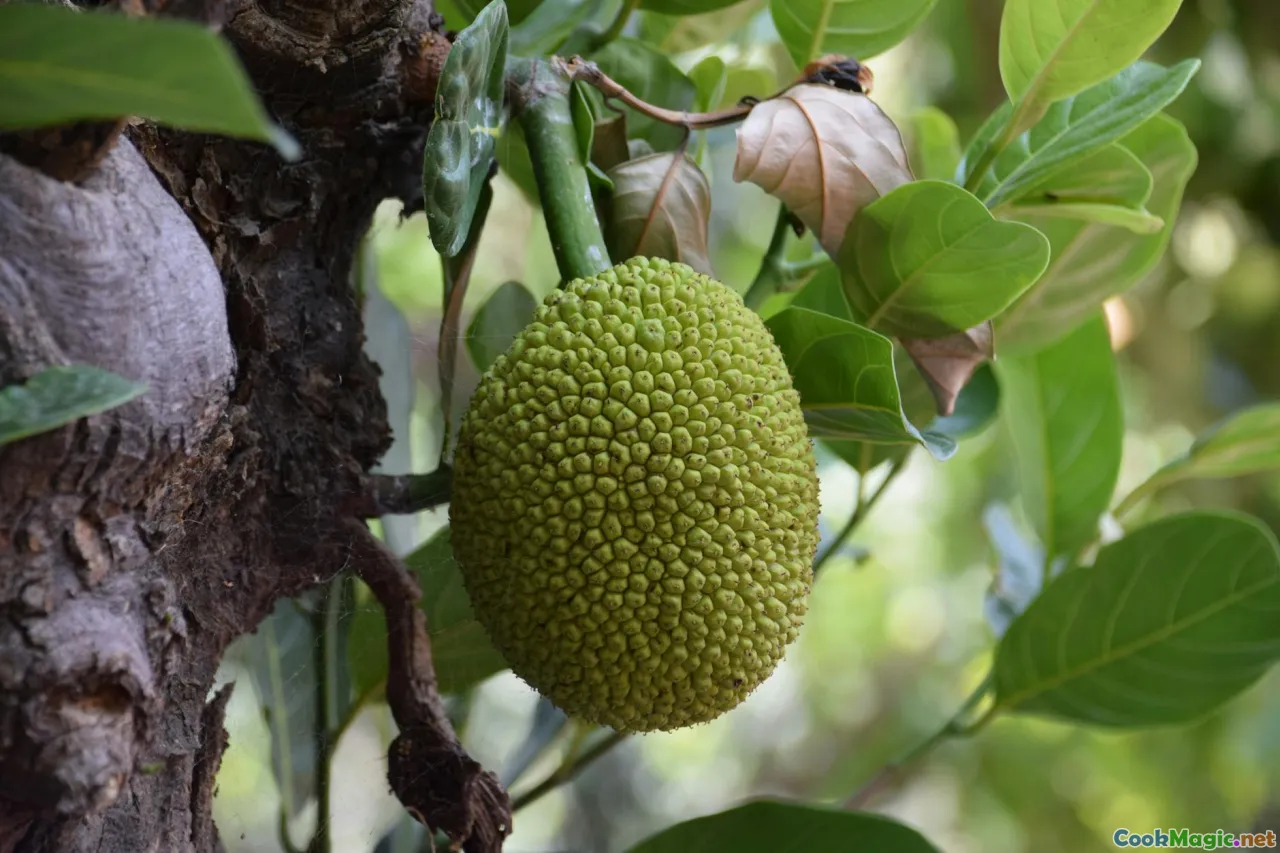
Jackfruit wears many faces, and each one behaves differently in curry.
-
Young and green: Harvested before the fruit develops sweetness, young jackfruit has pale, firm flesh that pulls into soft shreds. Its sap runs sticky, like fresh latex. In curry, these pieces soak up spice like sponges. Their taste is gentle and slightly vegetal—think artichoke hearts crossed with the scent of banana leaf. Perfect for savory dishes.
-
Just turning: As the jackfruit matures but stays mostly unripe, the flesh firms up further and the fibers become longer, almost silky after braising. It retains a calm, neutral flavor but holds its shape better in the pot. I reach for this stage when I want the fruit to play a role similar to beef cubes in a stew, especially for long simmers with tuna bones or crab.
-
Fully ripe: Here the fruit becomes a dessert in its own right, with pods that slip free like golden petals. They smell warm and tropical, with notes of pineapple and gum. Ripe jackfruit shines in sweet-hot curries where chilies temper the sugar, or in quick coconut sauces served alongside fried fish. But be cautious—ripe fruit can overwhelm savory spices if you let it.
-
Seeds: The satiny brown seeds, freed from their pods, boil to a tender creaminess. Peeled, they taste like a cross between chestnut and young potato. They are superb in coconut curries, where their starch helps the sauce gloss over without flour. Think of them as natural thickening pearls with character.
Practical notes for a Solomon Islands kitchen:
-
Tackling the sap: Young jackfruit bleeds a stubborn latex. Rub a little coconut oil on your knife and hands to prevent sticking. Vendors often pre-cut chunks at the market; if you bring home a whole fruit, slit it lengthwise and let it rest cut side down on leaves for a half hour to let some sap drain.
-
Pre-cooking to tame: For savory curries, I like to blanch young jackfruit chunks in salted water with a pinch of turmeric until they soften slightly. This lifts any stray bitterness and sets the flesh so it won’t break down too quickly in the spiced sauce.
-
Storage: In the Solomons’ heat, keep prepped young jackfruit in lightly salted water in the cool of the morning. Use by evening. Ripe pods, if they last, sweeten the fridge with their perfume but can turn fast. Seeds hold well once boiled and peeled; toss them into a curry later in the week.
Anatomy of an island curry: building coconut depth around jackfruit
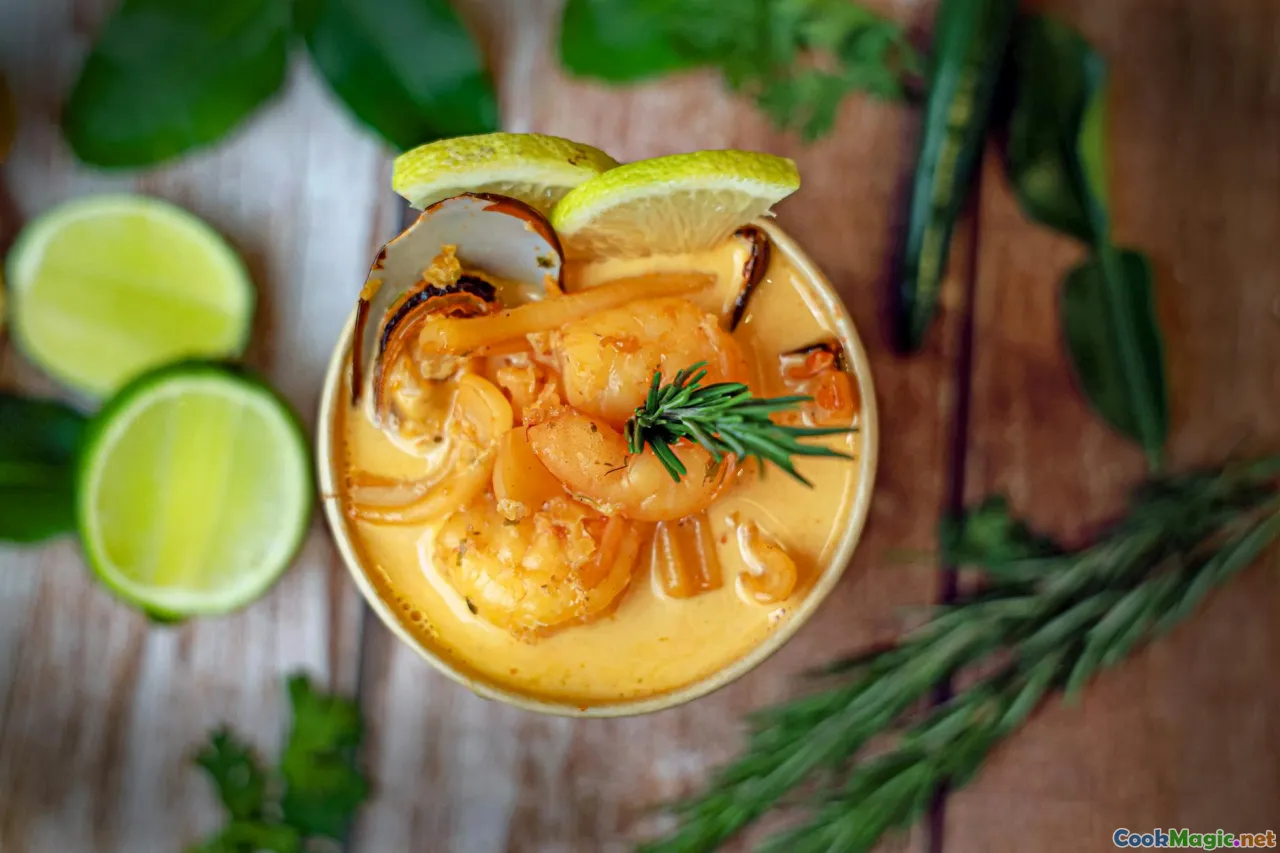
To understand how jackfruit enhances island curries, it helps to break apart the layers of flavor that define a Solomon Islands pot. The backbone is almost always coconut—freshly grated, squeezed into a thick first press and a thinner second press. The first press, rich like pouring cream, is often added at the end to bring a sauce to a glossy crescendo. The second press, lighter, is a braising liquid in which spices bloom.
The spice base often begins with a paste: ginger pounded with garlic and chilies, sometimes with a bruised stalk of lemongrass and a thumb of turmeric. In homes where curry leaves grow near the back steps, a few are cracked into hot oil at the start. If not, the citrus note is coaxed from torn lime leaves or even a squeeze of local lime at the finish. The oil itself is usually coconut oil, fragrant in a way that store-bought bottles in cooler climates can never imitate. If you can find virgin coconut oil pressed locally—several villages produce their own, and brands bottled in Honiara’s stores carry that clean coconut scent—you will taste it in the final curry.
Jackfruit moves through these layers like a conversation partner who asks good questions. It is hungry for spice but never greedy. Because of its natural fibers, young jackfruit locks onto aromatics, turning each shred into an expressway for flavor. Its mildness soothes rough edges: a chile’s heat gets lengthened into warmth; turmeric’s earthiness turns sunlit rather than muddy. Coconut’s sweetness, which can be cloying if left to run free, is tied down by jackfruit’s fresh, green undertone.
Consider a simple base:
-
Bloom the paste: Heat coconut oil until it loosens; add the pounded ginger-garlic-chili mixture, then turmeric and a pinch of curry powder. Stir until the room smells like rain on hot tin. Add chopped onion if you like, though many island cooks keep it simple.
-
Introduce the jackfruit: Add par-boiled young jackfruit chunks. Let them sizzle briefly to pick up the oil and spice.
-
Braise in second press: Pour in the thinner coconut milk and let everything simmer until the jackfruit relaxes. Add a whole tomato, cut into wedges, which will dissolve into quiet acidity.
-
Finish with first press: When the jackfruit yields to the spoon, swirl in the thick coconut cream. A squeeze of lime and a handful of chopped garden greens—pele or aibika—complete the curve of flavor.
The result is an architecture that holds shape: spice carrying fragrance up top, coconut rounding the middle, and jackfruit tying the structure to the ground like roots.
A cooking day in Malaita: an island story

In Auki, on Malaita, I learned more in an afternoon than from a shelf of cookbooks. The kitchen was outdoors under a sago-palm roof, three stones cradling a blackened pot. Children were scraping coconuts on a low wooden stool grater, their rhythm somewhere between a lullaby and a drum, the pile of white snow rising. A jackfruit had come down that morning—everyone heard it thud—so the plan was already made: curry with smoked fish and young jackfruit.
The fish—a piece of skipjack tuna, smoked the day before—lay wrapped in banana leaf, perfuming the air like a campfire that had known the sea. We prepared the jackfruit first, oiling our knives with coconut oil and cutting through the pale flesh. Sap pulled into strings; our hands shone. We cut the pieces into big, purposeful chunks, each one the size of a child’s fist. A pot of water hissed as we dropped them in with salt and a pinch of turmeric; they softened and turned lightly yellow, as if they had been painted by the late afternoon sun.
Meanwhile, we pounded ginger with garlic and chilies in a mortar, the wall of sound echoing off the palms. The paste was as thick as a story told over and over. A handful of curry leaves snapped in. Coconut oil melted in the pot—just a spoonful. We added the paste, and it bloomed. There is a small moment when ginger, garlic, and turmeric stop being separate and become a single warm smell, as if the pot has found its voice.
The jackfruit went in, then the smoked tuna broken in rough flakes, a few tomatoes, and the thin coconut milk. We fed the fire with small sticks and waited. When the curry had softened—when the jackfruit edges slumped and our mouths watered just looking at it—we poured in the first press coconut cream, a stream as white as reef foam. A last-minute addition of chopped pele leaves turned the sauce a pale jade. We ate with cassava pulled straight from the hot coals. The curry clung to the cassava as if it had been made for that purpose alone.
I remember how the jackfruit made the smoke taste deliberate rather than accidental. It smoothed the tuna’s assertiveness and lifted the greens. After, there were jackfruit seeds roasting in embers, a second curry planned for the next day. Food moves in cycles in the Solomons; nothing is single-use. Jackfruit fits perfectly into that rhythm, carrying flavor forward from one meal to the next.
Four island curries where jackfruit shines

Here are four specific preparations I have cooked and eaten in the Solomons, each one showing a different facet of jackfruit’s talent for enhancing curry.
- Young jackfruit and coconut village curry
-
You will need: young jackfruit chunks (pre-blanched), coconut oil, ginger, garlic, fresh turmeric, bird’s eye chilies, curry powder or a blend of coriander-cumin-fenugreek, tomato, second press coconut milk, first press coconut cream, lime, handful of chopped aibika or pele leaves, salt.
-
Make it: In a pot over medium heat, warm coconut oil and add a pounded paste of ginger, garlic, chilies, and turmeric. Sprinkle in curry powder. When fragrant, add jackfruit and let edges amber slightly. Add tomato wedges and the second press coconut milk. Simmer until jackfruit is tender and sauce is reduced. Finish with first press cream and a small squeeze of lime. Fold in greens right at the end so they blush but do not wilt away.
-
Why it works: Jackfruit’s fibers wick spice through the sauce; coconut’s richness is anchored by the fruit’s quiet green note. The lime brightness stops it from becoming heavy.
- Gizo-style tuna and jackfruit curry
-
You will need: skipjack or yellowfin tuna—fresh chunks or smoked flakes—young jackfruit, onion (optional), ginger, garlic, chilies, curry leaves if available, turmeric, lemongrass, second press coconut milk, first press coconut cream, chopped spring greens, salt.
-
Make it: Bloom aromatics and curry leaves in coconut oil. Add lemongrass, bruised. Slide in jackfruit and tuna simultaneously if using fresh, or add smoked tuna later to avoid it dissolving too much. Pour in second press coconut milk and simmer. Finish with first press cream and greens. If the sea that day gave you shellfish, tuck in a handful of cleaned mud crab claws for a special occasion.
-
Why it works: Tuna can dominate a curry; jackfruit reins it in, lending body so the sauce feels abundant without added starch. The lemongrass threads a citrus ribbon through the marine richness.
- Jackfruit seed and island mustard leaf curry
-
You will need: boiled jackfruit seeds, peeled; a spoon of coconut oil; ginger, garlic; green chilies; turmeric; a pinch of mustard seeds if handy; second press coconut milk; chopped mustard greens or any peppery local green; first press cream; lime; salt.
-
Make it: Toast mustard seeds in oil until they dance, then add aromatics. Tip in seeds and second press, simmer gently. Finish with first press and greens, adjusting salt and lime. Serve with rice or boiled plantains.
-
Why it works: Seeds play the role of creamy beans without being heavy. They thicken the sauce naturally and carry spice in their folds.
- Ripe jackfruit sweet-heat curry for grilled fish
-
You will need: ripe jackfruit pods, sliced; ginger, garlic; red chilies; pinch of brown sugar; dash of vinegar or lime; thin coconut milk; curry powder with extra fennel and fenugreek; fresh herbs (a few mint or basil leaves if growing nearby); salt.
-
Make it: Keep heat low. Sweat aromatics in a little oil with curry powder, add thin coconut milk and a touch of sugar, then the ripe jackfruit. Cook briefly—just enough for flavors to meet. Balance with vinegar or lime. Scatter with herbs. Serve beside grilled reef fish and plain rice.
-
Why it works: The fruit’s honeyed aroma offsets chilies and char. This is a dish for evenings when the sea breeze feels like a friend.
Jackfruit versus breadfruit, taro, and plantain: a comparison worth tasting

Island curries often lean on starchy companions. Breadfruit, taro, and plantain each has a distinct personality in sauce. Breadfruit is fluffy and absorbent; it drinks coconut milk gladly, but in doing so, it can become heavy and yield to mush if you are not careful. Taro has gravitas with its dense, damp crumb; it thickens a curry simply by being there, but it also carries a whisper of earth that can overshadow delicate aromatics. Plantain brings a sweet-starchy character that balances chilies but tends to slide apart unless fried first.
Jackfruit finds a middle road. It has the backbone to stay intact during a long simmer, but its fibers unravel just enough to weave spice into the sauce. It is less starchy than breadfruit and taro, more neutral than plantain. This neutrality is not blandness; instead, it is a permission slip for spices to stretch out. In Solomon Islands curries, where coconut cream already offers depth, jackfruit lets you build height—aroma, brightness, texture—without stacking on more weight. When you are feeding a family after church, with rice in one pot and greens in another, this balance means the curry stays appealing in the heat and the second helping tastes as lively as the first.
Texture magic: the science behind jackfruit in curry

Cooking is a sensory science, and jackfruit’s behavior in curry has a few useful explanations. The young fruit’s flesh is a complex net of cellulose and pectin. As heat and salt go to work, pectin softens, loosening the weave. Spice-laden oil then infiltrates, and the fibers trap aroma molecules the way a woven basket holds mangos. Because the matrix doesn’t collapse completely, the curry retains a satisfying chew, a mimicry of pulled meat without the heaviness.
Meanwhile, coconut milk emulsifies. The thin press suspends fat droplets within water; as it reduces, the sauce thickens without flour or roux. Jackfruit adds to this structure by contributing soluble pectins and, if you include seeds, starch. The whole pot becomes a gentle emulsion, so that even a spoonful contains everything—spice, coconut, sea, and fruit—bound naturally.
One more detail: turmeric’s curcumin binds to fat, and fat clings to jackfruit’s cellulose. This means the gold color doesn’t just float; it adheres to fibers. The result is a curry that looks and tastes cohesive, each strand gilded and fragrant. It is no wonder that cooks across the Solomons reach for jackfruit when they want a sauce that lingers on the lips without feeling greasy.
Sourcing in the Solomons: markets, seasons, and good neighbors

Jackfruit doesn’t read calendars, but it does follow the rains. After a good wet season, trees can carry multiple fruits in various stages. In Honiara’s Central Market, look for piles of pre-cut young jackfruit near the root crops; the vendors will know exactly which tree it came from and whether it will hold texture in a curry. In Gizo, the waterfront market sometimes has baskets of seeds ready for boiling; ask early before the day heats up.
Coconut is the Solomons’ metronome. For the best coconut milk, buy mature nuts and grate them yourself. Children learn to wield the coconut scraper with casual authority, and the difference in flavor is astonishing. If time presses, village-made coconut cream sold in bottles at roadside stands can be a lifesaver; sniff before buying—it should smell like fresh coconut, not old oil.
Seafood partners are everywhere. Fresh tuna is common thanks to the fleet that supplies the cannery at Noro. On days when the catch is thin, many home cooks turn to SolTuna cans, which sit reliably on pantry shelves from Honiara’s White River shops to guesthouses in Munda. A tuna-and-jackfruit curry built from a can is no compromise; the jackfruit does the same work of lending structure and breadth.
Herbs and greens are backyard gifts. Aibika or pele grows in many villages, alongside taro leaves and sweet potato tips. Lemongrass and turmeric often hide among banana trees. Chilies volunteer under banana leaves and along fences; a few can heat a pot for twelve.
Sustainability sits softly in the background of these choices. Jackfruit trees, once established, are generous without coaxing. Their deep roots grip soil, helping against erosion on steep gardens. Leaning into jackfruit for curry reduces pressure on reef fish, which need breathing room to replenish. In a place where the future of the sea is everyone’s business, every meal that finds its fullness in fruit and greens is a small vote for abundance.
How-to techniques that make jackfruit curries sing

A few small habits separate a good curry from a great one:
-
Oil the blade, not just the hand: When cutting young jackfruit, rub coconut oil along both sides of the knife. Keep a little bowl nearby to reapply. Sap on a dull blade is misery; oil on a sharp blade feels like slicing a mango.
-
Parboil with color: Blanching chunks in salted water with turmeric seeds a yellow glow into the flesh and takes away any trace of bitterness. Reserve a splash of the cooking water to add back later; it carries soluble pectin that helps sauce hug the jackfruit.
-
Layer coconut: Start with second press to soften and draw out spice. Stir in first press late, off a high boil, so it doesn’t split. If it does split, don’t panic—jackfruit’s fibers will still cradle the flavor.
-
Spice freshness: In Honiara’s shops, buy whole spices when you can. Toast coriander, cumin, and fenugreek lightly and pound with ginger-garlic paste. If using curry powder, wake it in oil for a moment before adding liquid to prevent raw bitterness.
-
Acid at the end: Lime or a dash of local vinegar brightens late. Sour early can harden jackfruit; sour late makes it sing.
-
Greens for finish: A handful of chopped greens stirred in after the pot is off the fire gives perfume without sludge. Jackfruit’s texture benefits from the contrast.
-
Salt in steps: Jackfruit absorbs salt gradually. Season the blanching water, the braise, and taste again at the end. It will keep your hand steady.
Troubleshooting and smart swaps
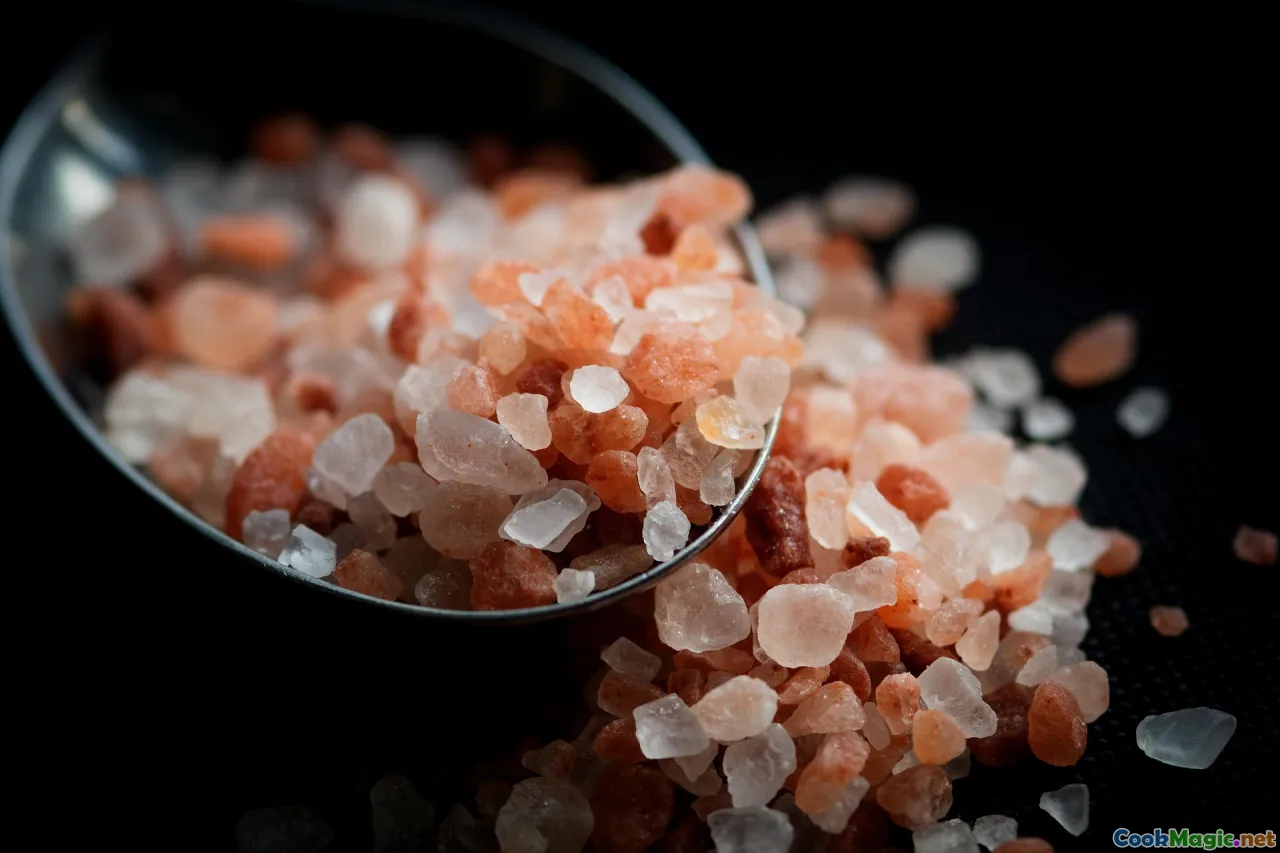
Even good cooks have off days. Here is how to steer a jackfruit curry back on course:
-
Sauce too thin: Mash a few jackfruit chunks against the side of the pot, or add a handful of boiled jackfruit seeds. Simmer to thicken naturally.
-
Sauce too thick: Loosen with a ladle of second press coconut milk or hot water infused with lemongrass. Avoid pouring in more first press—save it for a final gloss.
-
Too spicy: Stir in more jackfruit or a small diced tomato to dilute heat. A spoon of coconut cream at the finish smooths fire without killing flavor.
-
Too sweet (ripe jackfruit curry runaway): Add lime, a pinch of salt, and a few torn curry leaves. The leaves’ citrus-bitter edge reins sweetness back.
-
Jackfruit mushy: You added acid early or overcooked. Next time, blanch to set, simmer gently, and hold acidic ingredients for the end.
-
No jackfruit on hand: Breadfruit or firm plantain can pinch-hit, but be mindful of their differences. Better yet, use canned young jackfruit, now appearing in some Honiara shops—rinse well and treat as fresh.
-
No coconut milk: In a pinch, simmer in water or fish stock, then finish with a spoon of coconut oil. Not traditional, but the jackfruit will still carry the spice.
Where to taste: markets, homes, and a few kitchens that care

The richest jackfruit curries I have eaten in the Solomons were not on menus but at home tables. Still, if you are visiting, you can taste echoes in public kitchens:
-
Honiara Central Market food stalls: Seek out the midday counters where aunties serve rice with coconut stews. Ask for jackfruit curry if the season is kind; often it is tucked beside fish or chicken.
-
Guesthouses and beachside lodges: In Gizo, Munda, and Tulagi, small lodges will cook what the garden and sea offer. If you see a jackfruit under the house, ask. Chefs are glad to make a pot, especially with fresh tuna.
-
Hotel restaurants: Some hotel kitchens in Honiara, particularly those priding themselves on island flavors, occasionally feature coconut curries. Speak with the cooks; you may find a special off the menu if jackfruit is in.
-
Community events and church lunches: Sunday meals after service are still the heart of communal eating. If you are lucky to be invited, bring fruit and help wash dishes. The curry will taste better for it.
What unites these places is intent—a desire to let the island speak. Jackfruit, with its receptive heart, is a perfect interpreter.
Cultural threads: curry, kastom, and everyday abundance

Kastom is not a museum piece. It evolves. In Solomon Islands kitchens, curry is a modern dialect spoken with local grammar: coconut, gardens, neighborly exchange. Jackfruit makes that dialect fluent. It allows cooks to feed a crowd with a tree’s generosity, to celebrate a catch without exhausting it, to offer comfort that sits lightly in the heat.
There is a humility to jackfruit curries that feels right here. No flourish of garnish, no swaggering spice. Just a pot that smells like home, where woodsmoke swirls into coconut steam and children slip seeds from their skins by the fire. It reminds me that enhancement in cooking is not always about adding more. Often, it is choosing the ingredient that leans into the others and helps them become themselves.
I carry that lesson away from Honiara, past the shoreline where outrigger canoes tilt like commas, past markets stacked with yam and greens, past the memory of a jackfruit thudding to earth. In my own kitchen, far from the Solomons, when I simmer a curry with young jackfruit, I smell a place where abundance is ordinary and shared. The fruit teaches the curry to listen—to the sea, to the coconut, to the fire—and to answer softly. That is how jackfruit enhances island curries: not by taking the stage, but by setting it. And when the pot comes to the table, and the first spoonful touches rice, you will taste what the islands have long known: some ingredients are not stars or sidekicks. They are bridges. Jackfruit is one of them.









